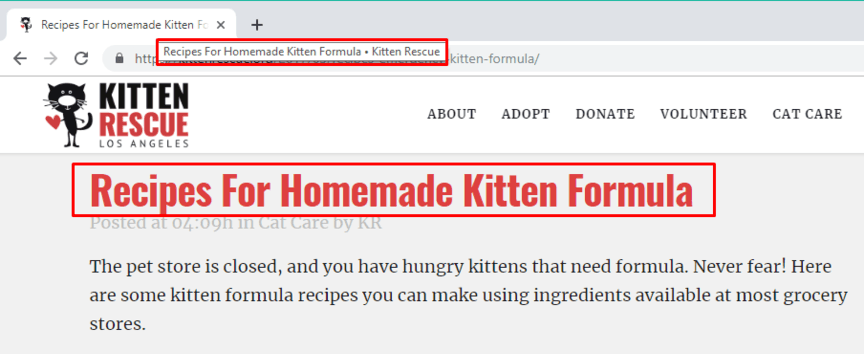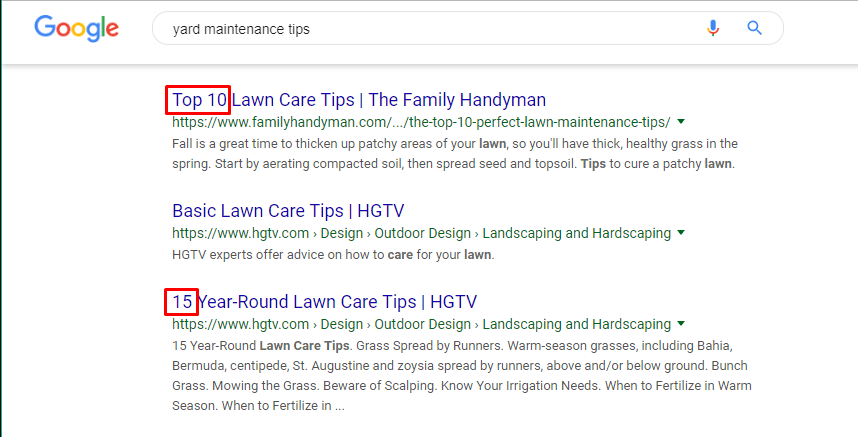Others
What Is a Title Tag? (Plus 4 Steps to an SEO-Friendly Title)
Here’s a great article from WebFX Blog
With search engine optimization (SEO), small details on your site pages can have a large impact on your rankings. Title tags, for example, may seem insignificant, but they pack a bigger punch than you’d think.
Just like the title of a book catches your attention, a page’s title tag is the first step that invites people to click on your page in search engine results pages (SERPs).
So, what is a title tag? Keep reading to find out exactly what a title tag is and why it matters for your SEO strategy.
Are you looking to drive traffic and generate revenue? Choose WebFX for a leading SEO agency. Over the last five years, we’ve generated $1.5 billion in client revenue. Contact us online or call us at 888-601-5359 today to speak with an expert and start your SEO journey to success.
What is a title tag?
A title tag is an HTML indicator — written <title> under the <head> section — that labels your page for both real people and search engines. In SERPs, the title appears as the blue text that people click on to navigate from the results to your page.
It serves as a headline to summarize your page’s content, and if it’s eye-catching and informative, it stands out from similar titles across the SERP.
In this case, “25 Backyard Decorating Ideas – Good Housekeeping” is the title, and it helps you know what to expect once you click the result.
Title tags also appear at the top of browser tabs to show the name of the page. This means the HTML title tag doesn’t quit being useful after searchers leave the SERPs — it continues to show what your page is about throughout a user’s session.

Whether they have multiple tabs up or they’re rummaging through their search history, it’s handy to see the titles so they can find their way back to your site.
Title tags tend to span no more than 60 characters, although it depends on the search engine and width of the letter combinations. If they exceed the display length, they end up trailing off, which leaves users unaware of the rest of the title name.
Why are title tags important to SEO?
For on-page SEO, title tags are a considerable factor. Google’s algorithm recognizes the title as a major sign for the page’s purpose and relevance. In the structure of the page, the title is the highest level of the hierarchy, meaning it carries more weight for communicating the main idea of your content than subheadings.
Primarily, the title carries the desired keywords for rankings, and if the title tag isn’t tailored for queries, it’s a lost opportunity to reel in traffic and drive conversions. To climb higher in search results, your HTML title tag has to remain clear for search engine algorithms and enhance the user experience.
With the level of optimization for the title, the click-through rate (CTR) differs. Since you’re trying to attract real people to your page, you want to represent your page well and set it up as a useful resource.
The correlation between a good title tag and the CTR comes down to producing a line of text that shows your brand’s distinct benefits in an inviting way. Dressing up your title tag with catchy phrases or effective call-to-actions (CTAs) can amplify your CTR and offer a surge of qualified traffic.
Title tag vs. H1 tag
Because headers are also significant to on-page SEO, title tags can get lumped together with them, and many think they’re the same element in HTML. So, what’s the difference between HTML title tags and H1?
H1 tags are the first headings you see on a well-structured page, and they help prepare users for what they’re going to read or watch. H1s don’t show up on the SERP, and users only see them once they’ve navigated to your page.

For example, the above screenshot shows the title tag (the page’s name in the browser tab) as “Recipes for Homemade Kitten Formula?Kitten Rescue,” while the H1 is “Recipes for Homemade Kitten Formula.”
As you can see, the title tag and H1 can include many of the same words, but they appear in separate spaces and contribute differently to SEO rankings.
4 steps to creating an SEO-friendly title tag
Google and other search engines look for several factors to get a sense of a page’s quality and topic, and you can get closer to the number one search result spot with an optimized title tag.
Since title tags have such a prominent role in SEO, it’s useful to know how to capitalize on them for higher rankings. Check out these four steps to start creating effective, SEO-friendly title tags.
1. Create an original title
Search engines look for unique, detailed title tags for each page on your site. The danger that some run into is using duplicate titles for similar pages, and this can hurt your rankings.
For instance, if you title multiple pages on your site with the tag “Most Affordable Goods – Buy Now,” potential customers and search engines can have difficulty understanding which page they were just on and where they want to go. Search engines also won’t differentiate between them and will have trouble choosing one to rank.
Google also steers clear of “boilerplate” titles, which reuse elements and only slightly shift a word from one page to the next.
Consider the keywords you’re targeting and what makes your business unique, and let those characteristics lead the way in your title tag.
Construct a creative but straightforward title that reflects your services and products. Even with a daunting collection of pages to name, you can utilize title tag templates to produce SEO-appropriate titles.
2. Insert the central keywords
It’s crucial to place your foundational keywords into your title tag because recognizable terms in the title can attract more visitors and appeal to search engine’s standards.
If possible, start your title tag off with your central keywords to give them a valuable position. As people quickly judge which page to click on in the SERP, an early keyword reference can draw them toward your site.
Also, long-tail keywords in your title tag can pinpoint a specific group of interested customers, so check for related keywords that extend to three or more keywords. Adapt long-tail keywords for your title tag for a more robust approach to SEO optimization.
Unsightly keyword stuffing is never the answer, so avoid titles that trail on with keyword variations that won’t increase user satisfaction — “Scarves for Sale, Buy Scarves, Buy a Scarf Today.”
3. Add a hook
For a title tag that sufficiently reels people in, you need a captivating message or eye-catching features. Even this concise line should address customer pain points, and title tags can instill a hook in a variety of ways.
Emotion is an essential hook to target users, and you can input it through the right descriptive words. Rather than listing a blog as “Yard Maintenance Tips,” you can spruce it up with powerful terms and title it “Incredible Yard Maintenance Tips for a Gorgeous Lawn.” While retaining your core keywords, you can help your title resonate with people.
Another strategy is to use numbers in the title tag, which lets users know they can easily move through a list. Manageable lists are a crowd favorite, and a numbered roundup or guide can entice plenty of traffic.

In the same way that quantitative descriptions grab people’s attention, adding the year also indicates timely information. Tacking “2019” onto your title is perfect for industries that constantly change and rely on trends, but they tend to perform well due to their fresh data.
There are several ways you can create intrigue for your page via the title tag. First, explore your target audience’s needs and desires to raise your CTR and develop revenue.
4. Appropriately promote your brand
The title tag is an excellent place to reinforce your brand and spread awareness. However, be cautious where, when, and how much you refer to your brand.
A homepage or “about us” page are both ideal places to strongly promote your brand name, but you can also finish off other pages with a brief mention of your business. For instance, in the following example, Crate and Barrel added their name at the end of the title tag.

If your business’ name is well-respected and recognizable, it’s reasonable to emphasize it in your titles, because it organically gains interest and trust from users. Balance your brand name usage in title tags for optimal SEO.
Optimize your title tags and SEO with WebFX
Optimizing your title tags is a positive step in creating an SEO-friendly page that ranks at the top of search results. The brief explanation about your page can grab users’ attention and generate exposure for your products, resources, and services.
When you optimize your site, services from a leading SEO agency are indispensable.
WebFX is a top SEO company with 20+ years of experience designing and implementing successful SEO strategies. From keyword research to content creation, we formulate an effective campaign to bring in revenue and qualified traffic.
Our team of 150+ brings expertise to your campaign, and we’ll create a customized strategy for your unique business and needs. Contact us online or call us at 888-601-5359 today to speak to an expert.
The post What Is a Title Tag? (Plus 4 Steps to an SEO-Friendly Title) appeared first on WebFX Blog.

